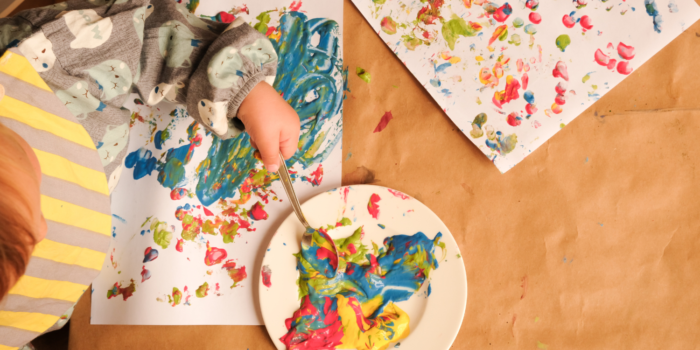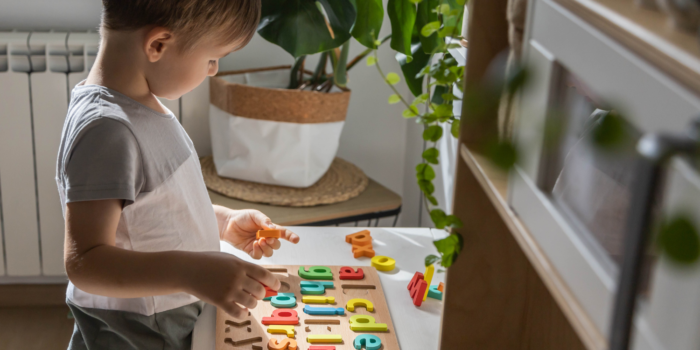Child Development Exposed: A Practical Parenting Guide for Every Mom

Do you ever find yourself caught in the whirlwind of motherhood, where moments of joy collide with challenges that test your patience to its limits? Picture this: a hectic family dinner, fried rice scattered like confetti across the carpeted dining room floor, and you on the verge of a meltdown to rival your child’s. In those chaotic moments, it’s easy to wonder: Is there a secret to finding joy in the midst of the mess?
In the journey of motherhood, we encounter a multitude of emotions, from the heartwarming to the exasperating. This post is a guide through the ups and downs of parenting, exploring how understanding the “whys” behind our children’s behavior helps us find our joy in the middle of the chaos. This is a part of the series “Finding Joy in Motherhood. If you haven’t already, check out Part 1, Part 2, and Part 3
So, let’s dive into the complexities of motherhood together, unraveling the transformative power of compassion and connection in the beautiful mess of raising children.
Disclaimer:
This blog post contains affiliate links. This means that I may earn a commission if you click on the link and make a purchase, at no additional cost to you. Please note that I only recommend products or services that I genuinely believe in and that align with the content and values of my blog. Your support through these affiliate links helps me maintain and improve the quality of my content. Thank you for your support!
The Daily Struggle:
Back to the story of our family dinner, with the fried rice scattered like confetti across the carpeted dining room. My one-year-old son has entered the stage where throwing everything – toys, clothes, and most distressingly, food – has become his favorite pastime. Living in an apartment with a carpeted dining room floor only adds an extra layer of difficulty to the chaos. Mealtimes have transformed into battlegrounds, with food flying in every direction and the carpet bearing the brunt of it all.
On one particularly exhausting day, after hours of cleaning up after him, we finally sat down to dinner of shrimp fried rice. This meal is notoriously difficult to clean from the carpet. Against my wishes, my son began to throw rice everywhere, and my frustration quickly reached
its peak. The thought of picking tiny grains out of the carpet seemed overwhelming, and I was on the brink of losing my temper.
But then, in a moment of clarity, a realization struck me like a bolt of lightning: my son wasn’t throwing food to upset me. He was simply practicing a new skill he had learned – throwing. He was exploring his capabilities and had no understanding of the mess he was making or the frustration it was causing me.
A Change in Perspective:
As I watched my son gleefully fling rice across the room, I understood that his brain was still developing. He didn’t know that throwing food was undesirable because his brain was not developed enough to understand that. Getting angry and yelling would not change his behavior; he needed guidance, not punishment.
So, instead of reacting with anger, I took a deep breath and thought about how I could teach him the behavior I wanted to see to replace the throwing behavior. Grabbing a small bowl, I showed him that he could place his unwanted food there instead of throwing it. We practiced this new behavior together, and gradually, he began to understand.
As I guided my son through this new learning experience, something magical happened. Instead of feeling frustrated, I watched his face light up with curiosity and excitement at the challenge before him. His contagious laughter filled the room, and soon, I found myself laughing along with him. What could have been a moment filled with frustration turned into a joy-filled memory, reminding me of how powerful understanding and compassion are.
This experience allowed me to have more compassion and less frustration at the dinner table. It reminded me that in motherhood, there are behaviors that children do that are really frustrating and can cause anger. However, if mothers understand why their child is behaving a certain way through understanding child development, emotional needs, or communication cues, that understanding fosters compassion. And with compassion comes a different approach – one that promotes positive responses and increases joy in motherhood.

Understanding the “Whys” Behind Behavior:
Imagine the frustration of a child’s constant whining or their refusal to eat, sending you teetering on the edge of exasperation. In those moments, it’s easy to feel overwhelmed and powerless. But what if we paused to consider the underlying reasons behind these behaviors?
By understanding that our children’s actions are often driven by their developmental stage, emotional needs, or attempts to communicate, we gain a newfound sense of compassion and empathy. Instead of reacting with frustration or anger, we can respond with patience and understanding, recognizing that our children are still learning and growing.
The Power of Compassionate Response:
Picture a scenario where your child throws a tantrum in the grocery store, leaving you feeling embarrassed and frazzled. Instead of responding with harsh words or disciplinary measures, imagine approaching the situation with empathy and compassion.
By recognizing that your child may be feeling overwhelmed, tired, or hungry, you can respond with gentle guidance and reassurance. Offering a comforting hug, a reassuring word, or even a snack can soothe their distress and help them feel understood. In turn, your compassionate response fosters a positive connection and strengthens your bond with your child.
Increasing Joy Through Understanding:
As you navigate the ups and downs of motherhood, you may encounter moments of frustration and exhaustion. But by embracing a mindset of understanding and compassion, you can transform those challenging moments into opportunities for growth and joy.
When you approach your child’s behaviors with curiosity and empathy, you open the door to deeper connection and understanding. Instead of feeling overwhelmed by their actions, you can find joy in the knowledge that you are helping your child navigate the world with kindness and grace.
Common Toddler Behaviors:
As mothers, we’ve all experienced those moments when our children’s behavior leaves us feeling frustrated, overwhelmed, and, at times, at our wit’s end. From the constant screaming to the hair-pulling mischief, navigating the minefield of toddlerhood is no easy feat. Here are some common behaviors that many mothers can relate to:
Throwing:
Whether it’s food, toys, or anything within arm’s reach, toddlers seem to have a knack for launching objects with surprising accuracy. The sight of our once-tidy living room transformed into a makeshift battleground can leave even the most patient of mothers feeling exasperated.
Crying:
Ah, the infamous toddler tantrum – a symphony of tears, wails, and dramatic flailing. Whether it’s over a broken cookie or a misplaced toy, these meltdowns can test even the sturdiest of parental resolve.
Biting:
The sudden nip of tiny teeth sinking into soft flesh can catch any mother off guard. Whether it’s out of frustration, curiosity, or simply a desire for attention, biting is a behavior that many mothers find challenging to handle.
Hitting:
From playful swats to full-blown tantrum-induced smacks, the act of hitting is another common behavior that many mothers encounter. Whether it’s directed at a sibling, a parent, or even themselves, dealing with aggression in toddlers can be both emotionally and physically draining.
Not Eating:
Oh, the battle of wills at the dinner table – a timeless struggle that many mothers know all too well. Whether it’s picky eating, mealtime meltdowns, or outright food refusal, getting toddlers to eat can sometimes feel like an uphill battle.
Clinginess:
The tears, the clinging, the desperate pleas – all of it can leave mothers feeling torn between wanting to comfort their child and needing to attend to other responsibilities. Whether it’s holding onto your leg or resisting separations, dealing with clinginess can be both endearing and challenging for mothers.
Sleep Resistance:
Ah, bedtime – the sacred hour when mothers finally get a moment of peace and quiet… or so we hope. For many mothers, bedtime can be a battleground, with toddlers resisting sleep at every turn. Whether it’s crying, pleading, or simply refusing to settle down, getting toddlers to sleep can often feel like an exercise in patience.
Refusing to Share:
Toddlers are notorious for their possessiveness, often unwilling to part with their toys or belongings. This can lead to conflicts with siblings or playmates and leave mothers feeling like referees in a never-ending game of tug-of-war.
Whining:
A toddler’s constant whining can grate on even the most patient of mothers’ nerves. Whether it’s for attention, out of boredom, or simply as a means of communication, dealing with constant whining can be both exhausting and frustrating.
Ignoring Instructions:
Toddlers have a knack for selective hearing, often tuning out instructions or requests from their parents. Whether it’s refusing to clean up their toys or ignoring simple directions, dealing with a toddler who refuses to listen can be a test of parental patience.
Stubbornness:
Oh, the stubborn streak of a toddler—a force to be reckoned with indeed. Whether refusing to try new foods, insisting on wearing mismatched clothes, or digging in their heels over the smallest of decisions, dealing with a stubborn toddler can be like navigating a minefield of willpower.
Attention-Seeking Behavior:
Toddlers crave attention like plants crave sunlight, often resorting to attention-seeking behaviors to get their fill. Whether it’s throwing a tantrum, acting out, or engaging in disruptive behavior, toddlers will go to great lengths to ensure they have their parents’ undivided attention.

Understanding Child Development:
Understanding child development can greatly aid in managing expectations and responses to challenging behaviors. Toddlers engage in behaviors as part of their natural exploration and learning process. Here’s a closer look at the science behind these behaviors:
Cognitive and Motor Development
Throwing
Between the ages of one and three, children experience significant cognitive and motor development. According to Jean Piaget, this stage, often referred to as the sensorimotor stage, is characterized by rapid growth in their ability to interact with their environment. Toddlers are developing hand-eye coordination and fine motor skills, which involve more precise movements. Throwing objects helps them practice these skills, enhancing their coordination and physical abilities.
Hitting
Hitting is another way toddlers test boundaries and learn about social interactions. They lack the impulse control and emotional regulation that comes with more advanced cognitive development. Their motor skills are sufficiently developed to hit, but their cognitive skills to manage anger or frustration are still emerging.
Biting
Biting can be linked to toddlers’ exploration of cause and effect and sensory feedback. It’s also a form of communication for expressing emotions like frustration or curiosity. Their cognitive development at this stage does not fully equip them to manage emotions or verbalize their needs effectively.
Ignoring Instructions
Ignoring instructions is part of toddlers asserting their independence and testing boundaries. Their selective hearing is a sign of developing cognitive abilities to focus on their interests, even if it means disregarding parental directions.
Exploration and Learning
Throwing
Throwing is also a form of exploration. Renowned child development psychologist Jean Piaget described this period as crucial for learning cause and effect. When a toddler throws an object and sees it fall, bounce, or make a noise, they are learning about the properties of objects and the consequences of their actions. This kind of sensory feedback is essential for cognitive development.
Not Eating
Toddlers are developing a sense of autonomy and control, which can manifest in refusing to eat. This behavior is a part of asserting independence and exploring their preferences. Their taste buds and sensory perceptions are also developing, making them more sensitive to textures and flavors.
Stubbornness
Stubbornness is a natural part of a toddler’s development as they assert their autonomy. This behavior reflects their growing willpower and desire to make independent choices, even if it means resisting suggestions or instructions.
Emotional and Social Development
Crying
Toddlers’ brains are still developing the ability to regulate emotions and express themselves verbally. Crying is a primary way they communicate their needs, feelings, and frustrations. They have not yet developed the cognitive skills to articulate their emotions or understand their intensity.
Clinginess
Clinginess in toddlers is often tied to their emotional need for security as they begin to explore their independence. During this stage, children are learning to balance their growing autonomy with the need for comfort and reassurance from their primary caregivers. This behavior can also stem from separation anxiety, which typically starts around 7 to 9 months of age and can persist into toddlerhood.
Sleep Resistance
Resistance to sleep in toddlers can result from various developmental changes, including increased motor skills that allow for more physical activity and cognitive developments that heighten their sense of independence and curiosity. Their active brains can make it harder for them to settle down. Additionally, separation anxiety, as noted by the National Institutes of Health, can manifest during bedtime as the child struggles with the temporary loss of their primary source of comfort and security, further complicating their ability to fall asleep.
Whining
Whining is a way for toddlers to express unmet needs or seek attention. They are learning how to communicate but lack the verbal skills to express themselves clearly, leading to repetitive and often frustrating vocalizations.

Understanding Emotional Needs:
Security and Comfort:
Toddlers seek security and comfort from their caregivers, especially in times of distress or uncertainty. This need stems from their reliance on caregivers for protection and emotional support. When toddlers feel insecure or threatened, they may exhibit behaviors such as clinginess, seeking physical closeness or reassurance from their caregivers through crying, or seeking comfort objects like blankets or stuffed animals.
Autonomy and Independence:
As toddlers develop, they begin to assert their independence and autonomy, wanting to explore the world around them and make their own choices. However, they still rely on their caregivers for guidance and support. When their desire for independence is stifled, toddlers may resist instructions, assert their preferences, or engage in power struggles as they seek to assert their autonomy.
Attention and Validation:
Toddlers crave attention and validation from their caregivers as a means of feeling valued and acknowledged. Positive attention reinforces their sense of self-worth and helps build their self-esteem. When they feel ignored or overlooked, toddlers may resort to attention-seeking behaviors such as whining, tantrums, or acting out in order to regain their caregivers’ attention and validation.
Emotional Expression:
Toddlers are still learning to navigate and express their emotions effectively. They may not yet have the verbal skills to articulate their feelings, leading them to express themselves through behaviors such as crying, hitting, or throwing objects. These behaviors serve as a means of communication, allowing toddlers to express their emotions and needs even when they can’t verbalize them.
Predictability and Routine:
Toddlers thrive on predictability and routine, which provide a sense of stability and security in their environment. Familiar routines help toddlers feel safe and secure, knowing what to expect from their daily experiences. When routines are disrupted or unpredictable, toddlers may become anxious or resistant to change as they struggle to make sense of their environment.
Affection and Connection:
Toddlers have a deep need for affection and connection with their caregivers, as it fosters feelings of love, security, and belonging. Physical touch, such as hugs, kisses, and cuddles, helps toddlers feel loved and valued. When they lack affection or feel disconnected from their caregivers, toddlers may seek attention through clinginess or become withdrawn as they attempt to fulfill their need for connection.
Positive Reinforcement:
Toddlers thrive on positive reinforcement and encouragement from their caregivers, as it helps boost their self-esteem and confidence. Praise and acknowledgment of their efforts and achievements motivate toddlers to continue exploring and learning about the world around them. Without positive reinforcement, toddlers may feel discouraged or seek attention through negative behaviors as they try to elicit the validation they crave.
Emotional Regulation:
Toddlers are still learning to regulate their emotions and rely heavily on their caregivers for support in managing big feelings. When overwhelmed by emotions such as frustration, anger, or sadness, toddlers may exhibit behaviors such as tantrums, meltdowns, or withdrawal as they struggle to cope. Caregivers play a crucial role in helping toddlers navigate their emotions by providing comfort, reassurance, and guidance in managing their feelings appropriately.
Understanding Communication Cues:
Nonverbal Communication:
Toddlers communicate through various nonverbal cues, including facial expressions, body language, gestures, and vocalizations. These cues provide valuable insights into their emotions and needs:
- Facial Expressions: Toddlers may display a range of facial expressions to express their emotions, such as smiling when happy, frowning when upset, squinting when curious, or wrinkling their nose when they dislike something.
- Body Language: Pay attention to your child’s body language, such as their posture, movements, and energy level. For instance, a toddler may stiffen their body when feeling uncomfortable or sway from side to side when excited.
- Gestures: Toddlers often use gestures to communicate their needs or desires, such as pointing to indicate what they want, waving goodbye when they’re ready to leave, or shaking their heads when they disagree.
- Vocalizations: Toddlers may use sounds and vocalizations to express themselves, such as cooing when content, babbling when exploring their voice, or shrieking when excited.
Context and Patterns:
Understanding the context and patterns of a child’s behavior is essential for interpreting their communication cues accurately:
- Mealtime Behavior: If a toddler consistently throws food during meals, it may indicate a need for sensory exploration, frustration with certain textures or flavors, or a desire for attention. Additionally, if a toddler refuses to eat despite being presented with their favorite foods, it could be a sign that they’re feeling full or unwell.
- Bedtime Routine: The bedtime routine offers insights into a toddler’s emotional state and needs. Suppose a toddler protests bedtime by crying or resisting sleep. In that case, it may signal teething, separation anxiety, a need for additional comfort, or a desire for more independence in their sleep routine.
Other Communication Attempts:
Toddlers may resort to various behaviors to communicate their needs, even if they seem unwanted:
- Biting: A toddler may bite as a way to express frustration, assert dominance, seek attention, or explore cause and effect. By understanding the underlying reasons for biting, mothers can respond with patience and provide alternative ways for their child to communicate their needs.
- Withdrawal or Avoidance: Toddlers may withdraw or avoid certain situations or activities as a way to communicate discomfort, fear, or anxiety. For example, they might avoid interacting with unfamiliar people or shy away from noisy environments.
- Repetitive Behaviors: Some toddlers engage in repetitive behaviors, such as rocking back and forth, hand-flapping, or spinning in circles. These behaviors can serve as a coping mechanism for managing stress, anxiety, or sensory overload.
- Regression: In response to significant changes or stressors, toddlers may exhibit regression in their behavior, reverting to earlier stages of development. This could include behaviors like thumb-sucking, bed-wetting, or baby talk.
- Hyperactivity or Restlessness: Some toddlers display hyperactive or restless behavior, such as constant movement, fidgeting, or difficulty sitting still. This behavior may indicate boredom, excess energy, or a need for sensory stimulation.
By recognizing and interpreting these communication cues, mothers can gain valuable insights into their toddlers’ needs and emotions, allowing them to respond with empathy, support, and guidance.

Practical Strategies for Handling Unwanted Behaviors
As mothers, navigating the challenges of parenthood often leaves us searching for practical strategies to turn those moments of frustration into opportunities for growth. So, how can we translate our understanding of the “whys” behind our children’s behavior into actionable steps that foster positive development? Let’s explore some practical tips to support our children’s growth while nurturing ourselves along the way.
Practical Tips for Cultivating Compassion:
- Pause and Reflect: When faced with challenging behavior, take a moment to pause and reflect on the underlying reasons behind it. Consider your toddler’s developmental stage, emotional needs, and any potential triggers that may be contributing to their behavior.
- Practice Empathetic Listening: Take the time to observe your toddler and truly listen to your toddler’s words and emotions, validating their feelings and offering reassurance. By acknowledging their experiences and perspectives, you can strengthen your bond and build trust.
- Respond with Patience and Understanding: Instead of reacting impulsively to your toddler’s behavior, respond with patience and understanding. Take a deep breath, remain calm, and approach the situation with compassion.
- Seek Support and Self-Care: Remember that you are not alone in your journey as a mother. Reach out to friends, family, or support groups for guidance and encouragement. Take time for self-care and prioritize activities that bring you joy and renewal.
- Celebrate Progress and Growth: Acknowledge and celebrate your toddler’s progress, no matter how small. Recognize their efforts and achievements and celebrate the milestones along the way.
Practical Tips for Supporting Development:
- Positive Reinforcement: Celebrate small victories and praise your toddler for positive behaviors. Whether it’s putting away toys or using kind words, acknowledge their efforts and reinforce these actions with praise or rewards.
- Consistent Boundaries: Establish clear boundaries and consequences for unacceptable behavior. Be consistent in enforcing these boundaries, providing your toddler with a sense of structure and understanding of expectations.
- Modeling Behavior: Toddlers learn by example, so demonstrate the behavior you wish to see in your toddler. Show them how to express themselves calmly and respectfully, modeling positive communication and conflict resolution.
Practical Tips for Meeting Emotional Needs:
- Emotional Validation: Validate your toddler’s emotions and let them know it’s okay to feel what they’re feeling. Offer empathy and understanding, helping them navigate their emotions in healthy ways.
- Quality Time: Dedicate quality one-on-one time with your toddler to strengthen your bond and build trust. Engage in activities they enjoy, such as reading, playing, or simply talking, fostering a deeper connection and sense of security.
- Create a Safe Environment: Cultivate a safe and nurturing environment where your toddler feels comfortable expressing themselves authentically. Foster open communication and provide reassurance, ensuring they feel heard and supported.
Practical Tips for Effective Communication:
- Active Listening: Practice active listening to understand your child’s perspective and feelings. Pay attention to their nonverbal cues and validate their emotions before offering solutions or guidance.
- Encourage Verbal Expression: Encourage your toddler to communicate their needs and feelings using words. Teach them to express themselves verbally, providing them with a constructive outlet for their emotions.
- Teach Alternative Strategies: Equip your toddler with alternative strategies for managing their emotions and communicating effectively. Teach them techniques such as deep breathing, using “I” statements, or seeking help from a trusted adult when needed.
Remember, navigating unwanted behaviors is a journey, and it’s okay to seek support when needed. Reach out to other moms, parenting groups, or professionals for guidance and encouragement. With patience, consistency, and love, you can empower your child to navigate challenges and thrive in their development.

Conclusion:
In the beautiful chaos of motherhood, we encounter moments that shimmer with joy and others that test our patience to its limits. The journey is marked by laughter, tears, and everything in between. Yet, amidst the challenges and frustrations, there lies a profound opportunity for growth and understanding.
As mothers, we are often faced with behaviors from our children that push us to the brink of anger and exasperation. From the defiant tantrums to the messy accidents, these moments can leave us feeling overwhelmed and powerless. But what if, instead of reacting with frustration, we paused to dive into the “whys” behind these behaviors?
Exploring the intricacies of child development, emotional needs, and communication cues unlocks a powerful tool for transformation. By understanding the motivations driving our children’s actions, we cultivate compassion and empathy. We shift from reacting impulsively to responding with patience and understanding.
Through this shift in perspective, we discover the power of compassion in motherhood. What could have been moments filled with frustration and anger are instead opportunities for connection and growth. We learn to embrace the challenges with grace and navigate the journey with resilience and joy.
So, let’s embrace the complexities of motherhood with open hearts and minds together. Let us nurture understanding and compassion, knowing that they are the keys to unlocking the boundless joy that awaits us on this incredible adventure called motherhood.

Reflect on a recent challenging moment in your journey as a mother. Describe the situation, your initial emotional response, and any insights you gained from the experience. How did understanding the underlying reasons behind your child’s behavior help shift your perspective? What strategies did you employ to navigate the situation with compassion and patience?
Consider a specific behavior or pattern of behavior exhibited by your child that often triggers frustration or anger. Take some time to explore the possible reasons behind this behavior, considering factors such as your child’s developmental stage, emotional needs, and communication cues. How might understanding these underlying motivations help you respond more effectively and empathetically in similar situations in the future?
Think about a recent interaction with your child where you responded with compassion and understanding, even in the face of challenging behavior. Describe how you approached the situation, the strategies you implemented to support your child’s development and emotional well-being, and the outcome of your response. How did this experience impact your relationship with your child and your overall sense of joy and fulfillment as a mother?
Imagine yourself faced with a challenging behavior from your child in the future. How might you apply the principles of compassion, understanding, and effective communication discussed in the blog post to navigate this situation? What specific strategies or techniques would you use to manage your own emotions and respond in a way that fosters positive growth and connection with your child? Take some time to brainstorm potential approaches and reflect on how they align with your values and parenting philosophy.

“The Whole-Brain Child: 12 Revolutionary Strategies to Nurture Your Child’s Developing Mind” by Daniel J. Siegel and Tina Payne Bryson
“How to Talk So Kids Will Listen & Listen So Kids Will Talk” by Adele Faber and Elaine Mazlish
“Parenting from the Inside Out: How a Deeper Self-Understanding Can Help You Raise Children Who Thrive” by Daniel J. Siegel and Mary Hartzell
“Brainstorm: The Power and Purpose of the Teenage Brain” by Daniel J. Siegel
“The Power of Showing Up: How Parental Presence Shapes Who Our Kids Become and How Their Brains Get Wired” by Daniel J. Siegel and Tina Payne Bryson
“The Montessori Toddler: A Parent’s Guide to Raising a Curious and Responsible Human Being” by Simone Davies
“The Yes Brain: How to Cultivate Courage, Curiosity, and Resilience in Your Child” by Daniel J. Siegel and Tina Payne Bryson
“No-Drama Discipline: The Whole-Brain Way to Calm the Chaos and Nurture Your Child’s Developing Mind” by Daniel J. Siegel and Tina Payne Bryson
“Simplicity Parenting: Using the Extraordinary Power of Less to Raise Calmer, Happier, and More Secure Kids” by Kim John Payne and Lisa M. Ross
“The Happiest Baby on the Block: The New Way to Calm Crying and Help Your Newborn Baby Sleep Longer” by Harvey Karp




